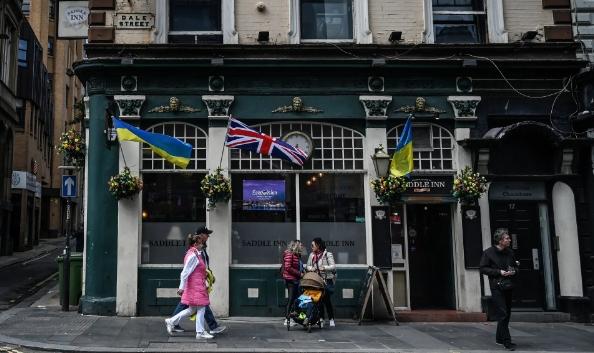Despite the implementation of post-Brexit restrictions and the government’s promises to tighten control, immigration to the U.K. soared to unprecedented levels in 2022. This influx can be attributed to a combination of factors such as ongoing conflicts, political dynamics, and economic opportunities. The Conservative Party, which has long emphasized the need to curb immigration, made stringent border control and migration policies a key component of the Brexit campaign aimed at separating from the European Union.
Contrary to expectations, immigration to the U.K. experienced a significant surge in 2022, as revealed by recent national statistics, which proved to be an awkward revelation for party leaders and their predominantly pro-Brexit supporters who had anticipated a decline. The data indicates that net migration to Britain, calculated by subtracting those leaving from those arriving, reached an all-time high of 606,000 last year. This represents a notable increase of 24 percent compared to 2021 and nearly twice the rate observed in the years immediately preceding and following the 2016 Brexit referendum.
The migration patterns in Britain reflect a multifaceted interplay of various domestic and global factors, including conflicts, employment prospects, and political dynamics. Therefore, what do the statistics reveal about the current situation in the country?
Roots of Migration: The Role of Violence and Oppression
From 2004 to 2017, the annual number of people migrating to Britain stood at around 600,000. However, in 2022, that number surged to a record-breaking 1.163 million, marking a significant increase that is unlikely to be replicated in the near future.
In the past year, significant rises were observed in the number of individuals seeking refuge from various crises worldwide. Notably, over 120,000 Ukrainians have migrated to Britain since the start of the Russian invasion in February 2022. Additionally, the Taliban’s seizure of power in Afghanistan and the escalating curtailment of civil liberties in Hong Kong have prompted a growing number of people to seek safety in Britain. To address these situations, the country has implemented dedicated humanitarian visa programs for these affected groups.
However, recent trends indicate a decline in these migration flows. It is important to note that some of the increased movement witnessed last year could be attributed to delayed migration that was initially hindered by the global impact of the coronavirus pandemic, which led to a temporary decrease in migration.
In the past, migration from the European Union constituted the majority of the influx of individuals into Britain. However, since Brexit removed the automatic settlement rights for EU citizens, the numbers have significantly declined. Last year, EU migration accounted for less than 8 percent of the total. On the other hand, emigration from Britain has increased in recent years, largely driven by EU citizens returning to their home countries.
The Significance of Education and Economics in Migration
Despite the Conservative government’s stance against high levels of migration, Britain is currently experiencing significant labor shortages, particularly in sectors such as healthcare, social services, and agriculture. These shortages have been exacerbated, in part, by the impact of Brexit.
With an unemployment rate below 4 percent, significantly lower than pre-pandemic levels, there is a high demand for workers in various industries. Despite the government’s stance, Britain continues to be an appealing destination for migrants seeking employment opportunities. In fact, many employers are urging the government to increase the allocation of work visas to address the labor shortage.

The government also highlights the role of education in driving immigration. Foreign graduate students residing in Britain have been increasingly utilizing a provision that allows them to secure visas for their dependent family members. This has contributed to the influx of immigrants in the country.
According to Suella Braverman, the home secretary, there has been a significant increase in such visas, with a 750 percent surge since 2019, reaching 136,000 visas issued last year. The majority of these visas were granted to individuals from Nigeria and India. While the government has expressed its intention to make obtaining dependent visas more challenging, migration experts suggest that this change would have a limited impact. Additionally, universities argue against discouraging foreign students, as they believe these students contribute to the economy.
Migration via the English Channel constitutes only a small portion of overall migration
While the political discourse surrounding migration in Britain has often centered around the visible arrival of individuals, particularly asylum-seeking refugees, in small boats across the English Channel, the latest migration data serves as a timely reminder that the number of undocumented individuals undertaking this perilous journey represents only a fraction of new arrivals. The majority of migrants enter the country through legal means.
According to government statistics published this year, only 45,755 individuals were detected arriving by small boats across the Channel in 2022, accounting for a mere 3.8 percent of the total number of people immigrating to Britain. However, even in its response to the recently released migration data, the Home Office prioritized measures to reduce boat arrivals while also aiming to curb overall immigration.
In a statement, the Home Office reiterated its commitment to lowering overall net migration, along with preventing unauthorized and perilous crossings of small boats, as part of their efforts to regain control of the country’s borders. Their focus remains on addressing abuse and ensuring the safety and legality of crossings.






